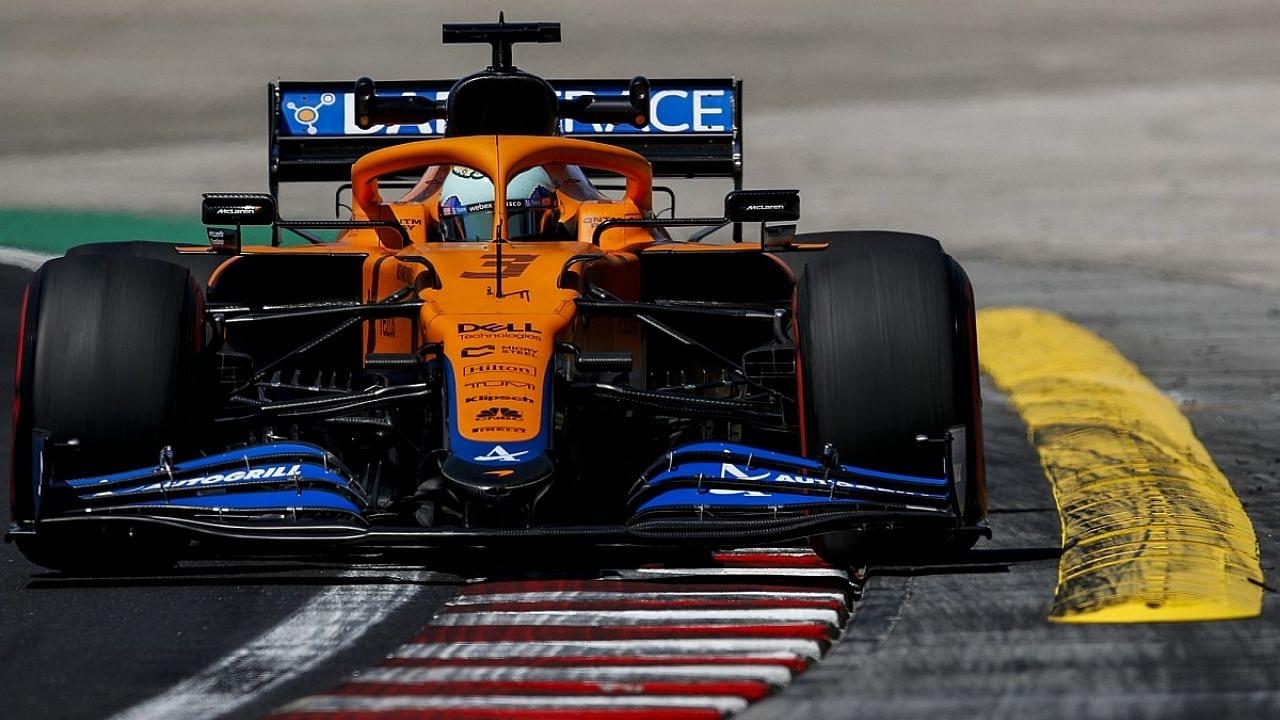McLaren had to face financial difficulties while securing podiums between 2020 and 2021. CEO Zak Brown describes the situation.
When the McLaren Group was in financial trouble in 2020, there was speculation of the main business going bankrupt. The F1 team appeared to be vulnerable to knock-on consequences. Thus the final sale of a significant minority part in the McLaren Racing subsidiary was rushed to completion.
However, this was expressed in getting the required funding to keep moving forward in the Formula 1 grid. There was never any indication that the transaction would save the company from immediate or long-term danger.
As a result, it may come as a surprise to see McLaren Racing CEO Zak Brown talk so bluntly about the process: “Ultimately, we were fighting for survival. It was pretty serious. I’m sure we would have found a way through it… but it was pretty serious.”
Also Read: Max Verstappen recalls his time with Ferrari legend Michael Schumacher
Where did McLaren go wrong?
McLaren group, which includes the Formula 1 department, was facing three major issues due to which the company was leaking money left and right:
- Covid 19: As the Covid 19 struck, suspending production and seeing demand for their products falling worldwide. They faced two challenges. First laying off 1200 employees and secondly entering a court battle with holders of existing bonds that, if lost, could have bankrupted it.
- Depreciation: The cars are depreciating at a very fast rate. Mclaren is building more amounts of cars than their dealers can sell. Due to this, the Mclaren dealers had to give discounts of 30k-$40k on their cars, and the company was making losses on cars sold.
💬 @DanielRicciardo: “Even if I wanted to say something other than Monza, like Austin, which was a really fun weekend and I got a top-five in the race, I just can’t. I have to go with Monza.” 🏆
Also hear what @LandoNorris‘ proudest moment of the season was… 👇
— McLaren (@McLarenF1) December 30, 2021
-
Owning to Insurance Companies: Raising the residual value of a car provides a GFE( Guaranteed Future Value) which means that at the end of the car’s ownership, a particular amount of money is what Mclaren predicts for the car to be worth. And suppose the car turns out to be anything less valuable than the GFE told by the Mclaren authorities. In that case, the buyer doesn’t pay any extra money to the insurance company and can peacefully return the car. In the next 2-5 years, every car financed will come back after its contract ends, and they will be significantly a lot less valuable than the GFE that Mclaren promised. And that is a matter that the insurance companies would not take lightly because Mclaren is the ones giving these GFE’s prices, which would ultimately mean that Mclaren owns the insurance companies.
Financial ‘Angel’ saves McLaren
Last December, McLaren Racing agreed to a £185m buy-in from MSP Sports Capital that gave the consortium of US sports investors an initial 15% stake rising to a maximum of 33% by the end of 2022.
Additionally, McLaren Technology Centre’s base was sold off for £170million, while the Saudi Arabian state-backed Public Investment Fund [PIF] invested £550million to smoothen out things further, financially.
“Without MSP’s investment, we might not be sitting here,” says Brown. “Now we’re sitting here extremely healthy, having just bought an IndyCar team, and we started an Extreme X team.
“I’m really pleased with the outcome because now are just very healthy and don’t have any worries. [But] we were not in good shape until we brought the investment on from MSP, which is something that I’d worked on for six months.”
That sets McLaren up to confidently stride into F1’s new era with the recent regulation changes, a brand new wind tunnel. They look too confident to fight for the constructor’s championship within the next three years.







